Abstract
We evaluated the potential cancer risk to adults from ingesting polychlorinated biphenyls (PCBs) in fish and shellfish using an equilibrium partitioning model of PCB bioaccumulation in the aquatic animal. Estimated potential cancer risk to humans increased exponentially with increasing hydrophobicity of the PCB. However, the addition of food-chain sources of PCBs was necessary to cause potential cancer risk to exceed 10(-6). Environmental degradation of the PCB reduced cancer risk by reducing the exposure concentration; 3.3 degradation half-lives were required to reduce cancer risk estimates by one order of magnitude. PCB biotransformation to nongenotoxic metabolites (no increase in the cancer slope factor) by the aquatic animal reduced cancer risk by reducing the steady-state concentration of PCBs in the edible tissue. Even relatively slow biotransformation (e.g., metabolic half-life of 100 days) reduced cancer risk estimates under the default model conditions. Nonequilibrium conditions, such as limited exposure time, reduced potential cancer risk by reducing contaminant concentrations in the aquatic animal. Risk assessment using toxic equivalency factors predicted substantially greater potential risk for specific congeners than for PCB mixtures. Our evaluation demonstrates that deviation from conventional assumptions used in risk assessment (e.g., negligible biotransformation and degradation; steady-state equilibrium) can significantly affect cancer risk estimates.
Full text
PDF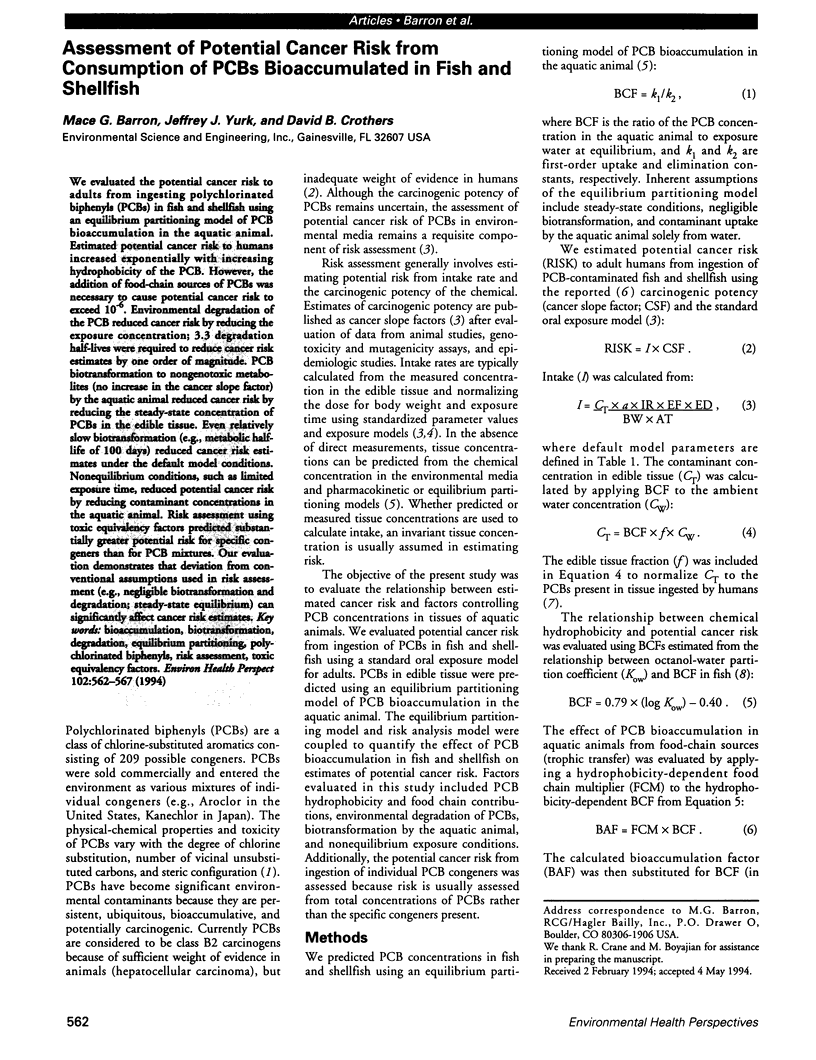
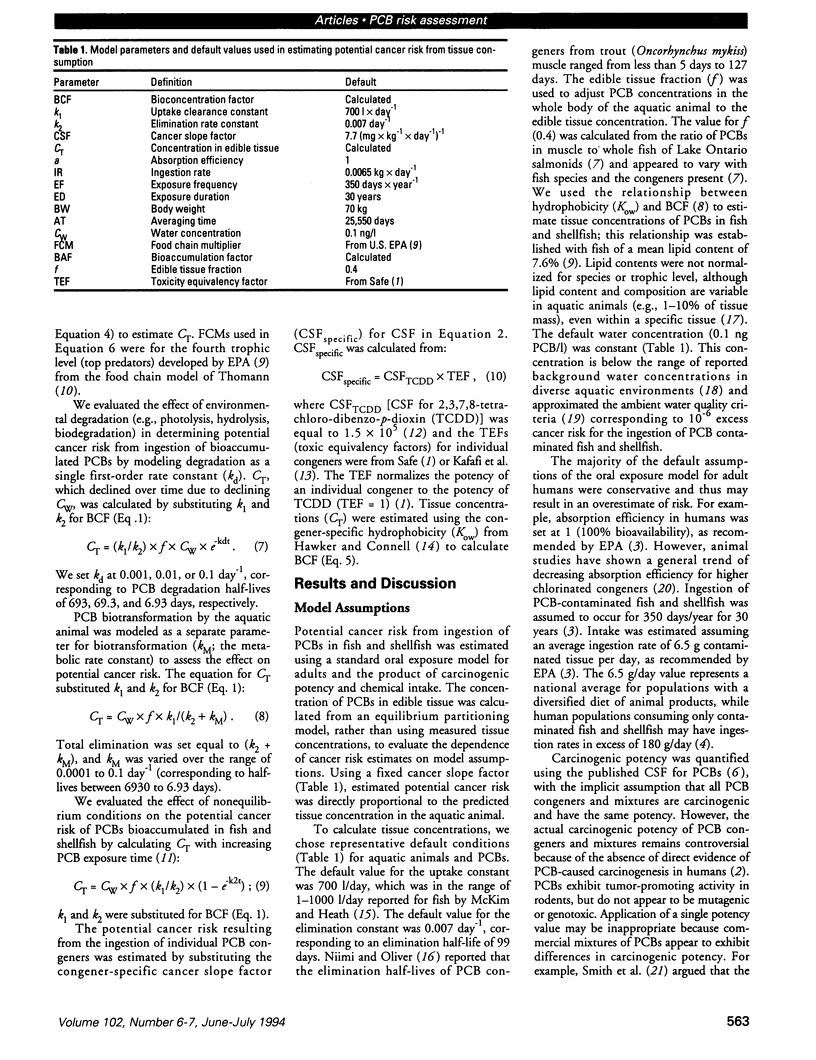
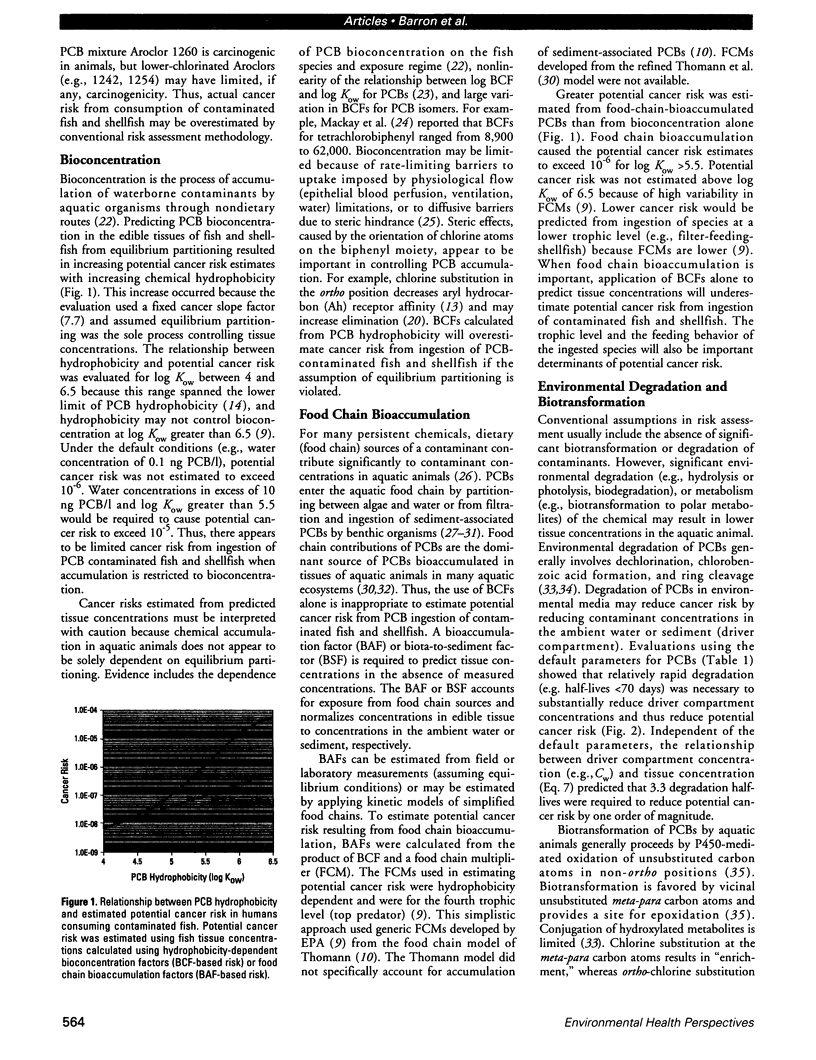
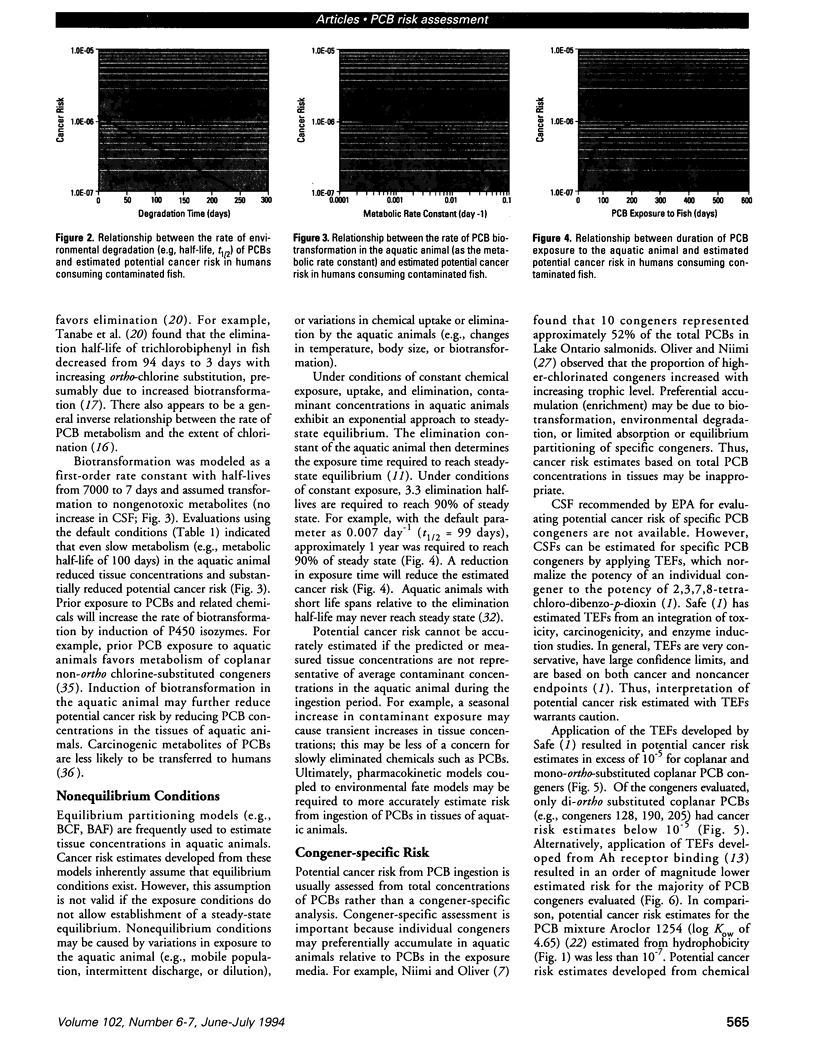
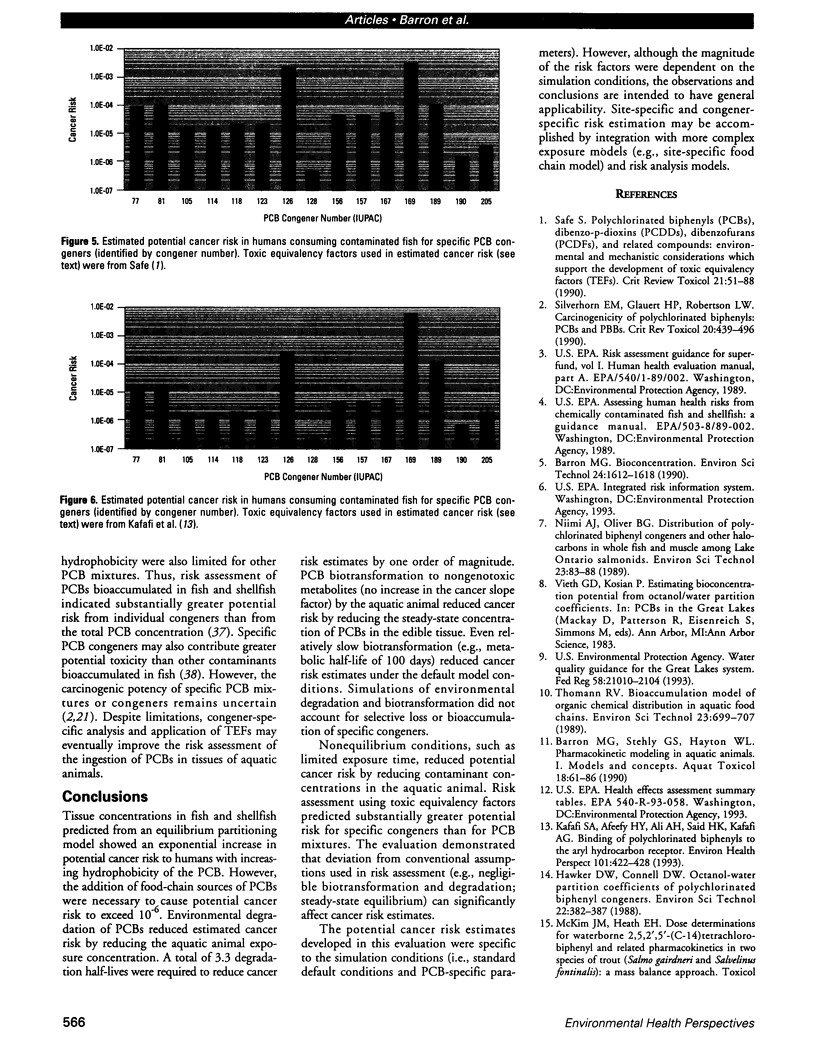
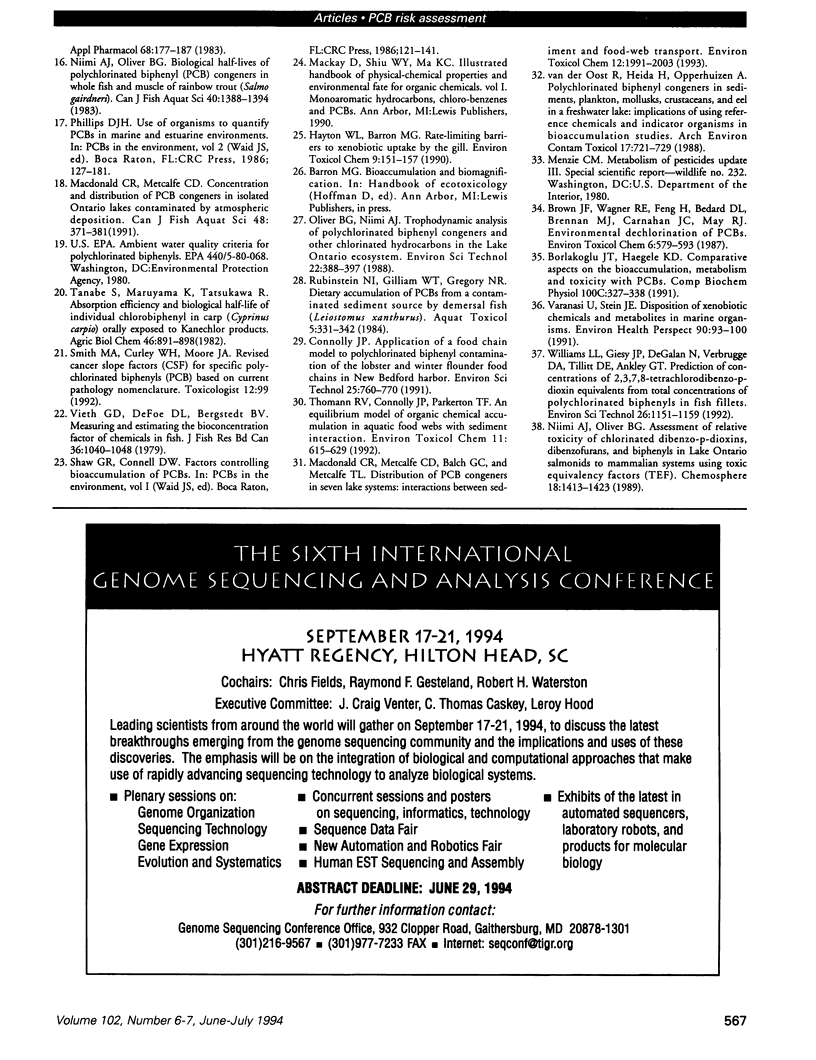
Images in this article
Selected References
These references are in PubMed. This may not be the complete list of references from this article.
- Borlakoglu J. T., Haegele K. D. Comparative aspects on the bioaccumulation, metabolism and toxicity with PCBs. Comp Biochem Physiol C. 1991;100(3):327–338. doi: 10.1016/0742-8413(91)90004-d. [DOI] [PubMed] [Google Scholar]
- Kafafi S. A., Afeefy H. Y., Ali A. H., Said H. K., Kafafi A. G. Binding of polychlorinated biphenyls to the aryl hydrocarbon receptor. Environ Health Perspect. 1993 Oct;101(5):422–428. doi: 10.1289/ehp.93101422. [DOI] [PMC free article] [PubMed] [Google Scholar]
- Safe S. Polychlorinated biphenyls (PCBs), dibenzo-p-dioxins (PCDDs), dibenzofurans (PCDFs), and related compounds: environmental and mechanistic considerations which support the development of toxic equivalency factors (TEFs). Crit Rev Toxicol. 1990;21(1):51–88. doi: 10.3109/10408449009089873. [DOI] [PubMed] [Google Scholar]
- Silberhorn E. M., Glauert H. P., Robertson L. W. Carcinogenicity of polyhalogenated biphenyls: PCBs and PBBs. Crit Rev Toxicol. 1990;20(6):440–496. doi: 10.3109/10408449009029331. [DOI] [PubMed] [Google Scholar]
- Vanden Heuvel J. P., Clark G. C., Thompson C. L., McCoy Z., Miller C. R., Lucier G. W., Bell D. A. CYP1A1 mRNA levels as a human exposure biomarker: use of quantitative polymerase chain reaction to measure CYP1A1 expression in human peripheral blood lymphocytes. Carcinogenesis. 1993 Oct;14(10):2003–2006. doi: 10.1093/carcin/14.10.2003. [DOI] [PubMed] [Google Scholar]
- Varanasi U., Stein J. E. Disposition of xenobiotic chemicals and metabolites in marine organisms. Environ Health Perspect. 1991 Jan;90:93–100. doi: 10.1289/ehp.90-1519508. [DOI] [PMC free article] [PubMed] [Google Scholar]
- van der Oost R., Heida H., Opperhuizen A. Polychlorinated biphenyl congeners in sediments, plankton, molluscs, crustaceans, and eel in a freshwater lake: implications of using reference chemicals and indicator organisms in bioaccumulation studies. Arch Environ Contam Toxicol. 1988 Nov;17(6):721–729. doi: 10.1007/BF01061978. [DOI] [PubMed] [Google Scholar]








